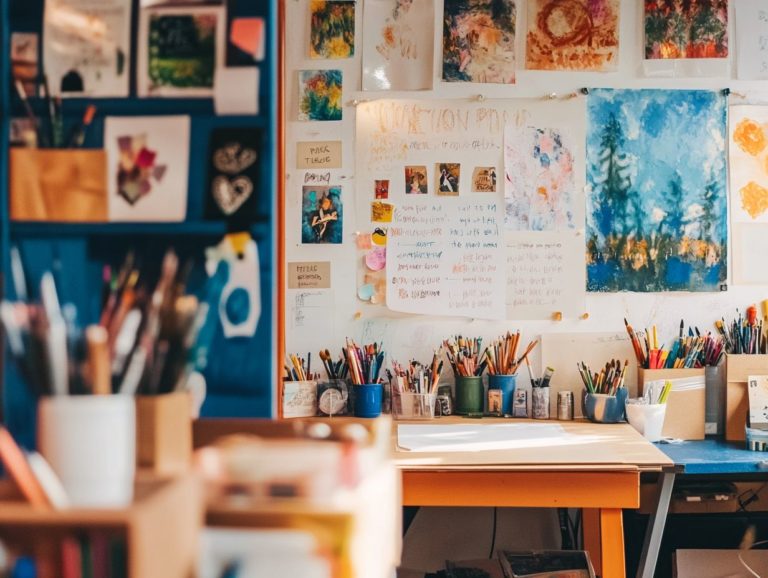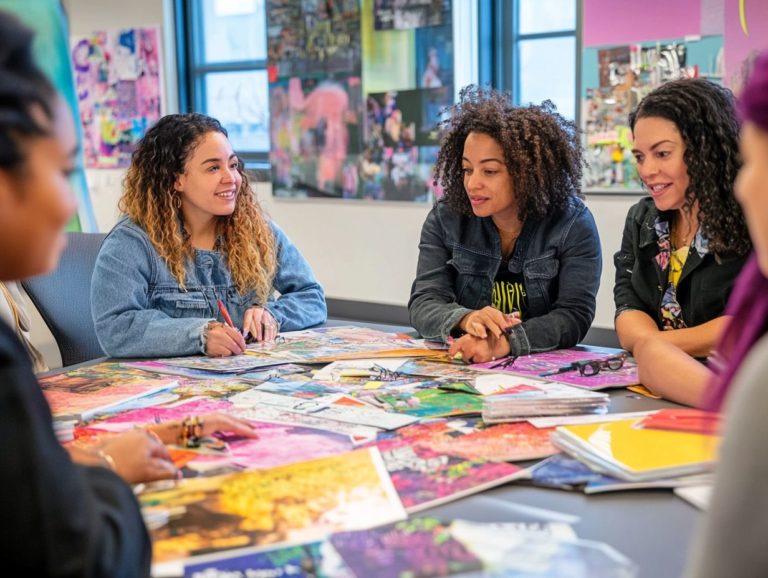How to Teach Vision Boarding to Kids
Vision boarding offers an engaging and creative outlet for children to visualize their dreams and goals.
This article delves into the concept of vision boarding, highlighting its benefits for kids and explaining why it serves as an essential tool for their development.
You will be guided through the process of introducing this practice to children, complete with age-appropriate activities, necessary materials, and a step-by-step guide for crafting their own boards.
You will also uncover delightful ideas that spark imagination and self-expression, nurturing a lifelong passion for creativity.
Discover how to empower your kids through the art of vision boarding!
Contents
- Key Takeaways:
- What is Vision Boarding?
- Why Teach Vision Boarding to Kids?
- How to Introduce Vision Boarding to Kids
- Materials Needed for Vision Boarding
- Step-by-Step Guide to Creating a Vision Board
- Fun and Creative Ideas for Vision Boarding with Kids
- Encouraging Children to Use Their Imagination and Goals
- Frequently Asked Questions
- What is vision boarding and why is it important to teach kids?
- Wondering how to introduce vision boarding to kids?
- What materials should I gather for vision boarding with kids?
- How can I make vision boarding fun for kids?
- How can I guide kids in choosing their goals for their vision boards?
- How often should kids update their vision boards?
Key Takeaways:
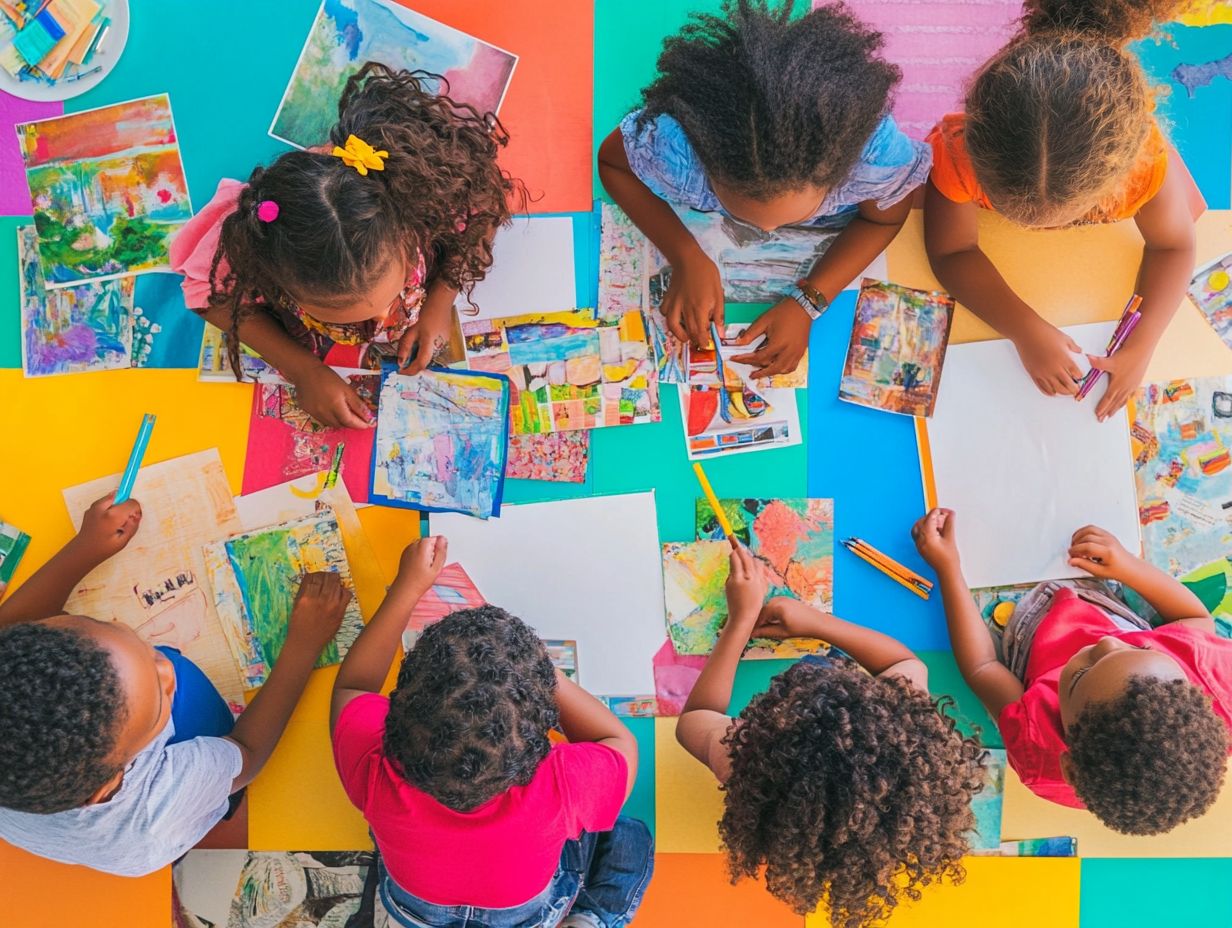
- Teach kids the power of visualization and goal-setting through vision boarding.
- Introduce vision boarding at an early age to promote creativity and self-expression in children.
- Encourage children to use their imagination and set achievable goals through fun and age-appropriate activities.
What is Vision Boarding?
Vision boarding is an artful process that invites you to create a visual representation of your aspirations and goals through a carefully curated collage of images, affirmations, and motivational quotes.
This powerful tool for visualization enables individuals of all ages, particularly children, to delve into their unique dreams and establish concrete goals for their futures.
By engaging in this enriching activity, kids can cultivate their imagination while simultaneously honing their decision-making skills and emotional growth.
Definition and Benefits
Vision boarding presents a wealth of benefits, particularly in enhancing goal-setting skills, fostering self-discovery, and promoting personal development, especially for children.
By creating a visual representation of their aspirations, kids have the opportunity to explore their dreams and desires, nurturing emotional growth as they learn to articulate what truly matters to them.
This creative process not only enriches their thinking skills but also encourages critical thinking and decision-making as they thoughtfully select images and words that resonate with their goals.
Engaging in vision boarding cultivates a growth mindset, teaching children that challenges are not roadblocks but rather stepping stones for improvement. As they visualize their path to success, they build resilience, enabling them to confront setbacks with a positive and determined attitude.
This transformative experience profoundly shapes their overall perspective on life s endless possibilities.
Why Teach Vision Boarding to Kids?
Teaching vision boarding to children is vital for their growth. It enables them to identify their unique aspirations, cultivate self-awareness, and express their thoughts creatively, especially with the help of vision boards: a step-by-step guide.
This nurturing of imagination enhances their thinking skills and provides a valuable creative outlet that fosters emotional intelligence and resilience.
Through this process, they learn to envision their future while honing essential life skills.
Importance for Children’s Development
Vision boarding is a fun and vital way for children to grow and learn about themselves! It significantly enhances their decision-making and thinking skills through engaging and artistic processes.
This creative endeavor fosters mindfulness and encourages kids to concentrate on their goals and aspirations in a tangible manner.
By visualizing their dreams, they learn to manage their emotions, discovering constructive outlets for their feelings and cultivating resilience amid challenges.
Engaging in these reflective practices nurtures a positive mindset, allowing them to develop gratitude and optimism while exploring their personal growth.
Through vision boarding, children sharpen their goal-setting and achievement skills and enhance their social abilities by collaborating with peers, fostering a sense of community and shared motivation.
What dreams will your child visualize today? Start your vision boarding journey today and watch your kids soar!
How to Introduce Vision Boarding to Kids
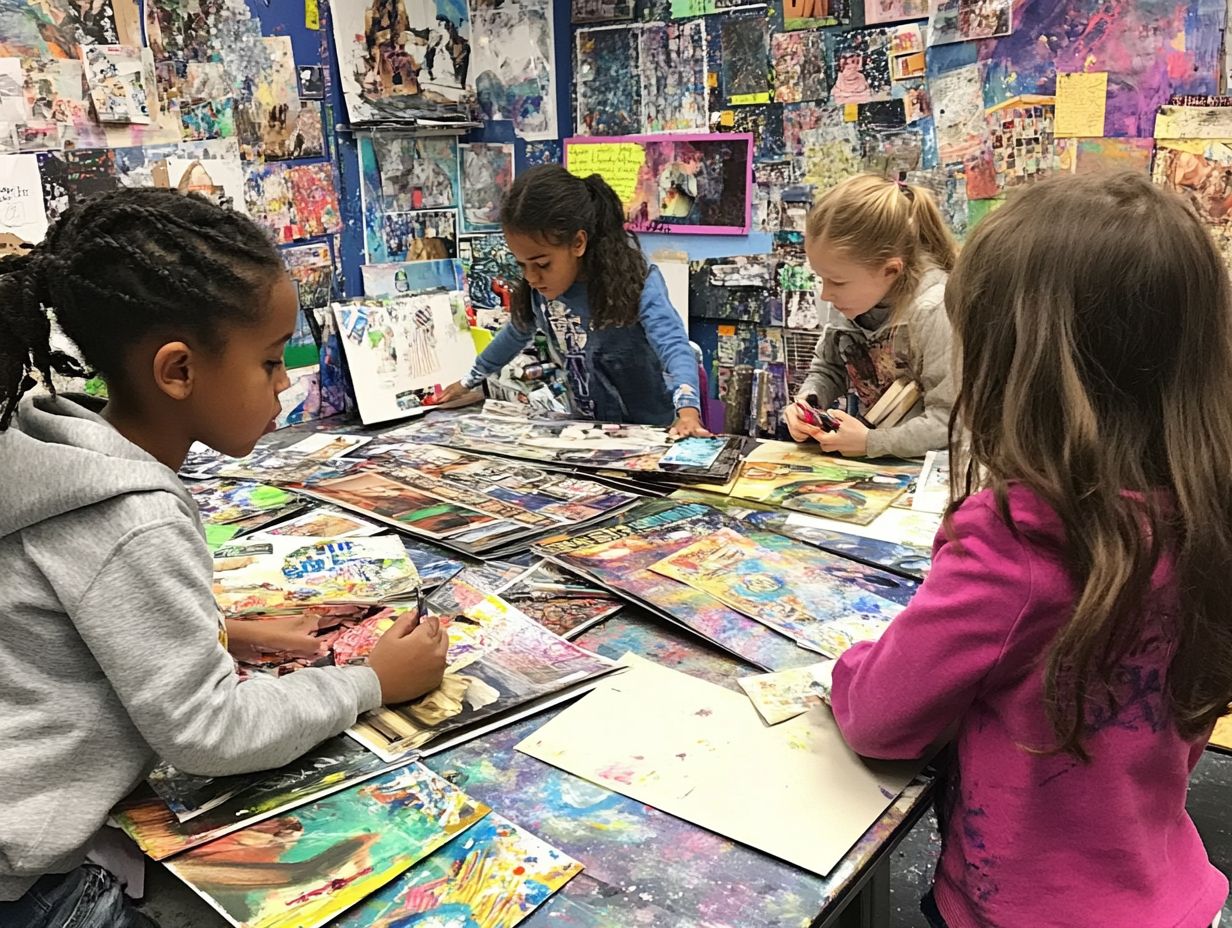
Introducing vision boarding to kids can be an exhilarating and enriching journey, especially when you customize it with engaging activities that ignite their curiosity and creativity. This bonding experience not only strengthens family ties but also teaches valuable ways to picture their goals that can benefit them throughout their lives.
Age-Appropriate Activities and Techniques
Age-appropriate activities for vision boarding can vary widely. This offers you the chance to guide kids in exploring their creativity through tailored techniques suited to their developmental stages.
For younger children, using colorful magazines, crayons, and child-friendly scissors in a collage-making session can truly ignite their imagination, helping them express their dreams visually.
As they mature, tweens may enjoy using digital tools and apps to craft electronic goal boards, blending images and quotes that resonate with them and fostering a sense of self-discovery.
For teenagers, encouraging deeper reflections through journaling alongside vision boarding can help them articulate their aspirations and emotions in a meaningful way. Group sessions help share ideas and strengthen connections among peers, regardless of age.
Materials Needed for Vision Boarding
Gathering materials for your vision board is exciting! You’ll be amazed at how they help you visualize your dreams. It’s not just an art project; it s a fun activity suitable for people of all ages.
Essential supplies may include:
- scissors
- magazines
- glue
- markers
- creative prompts for goal-setting
Dive into this fun activity and watch your dreams take shape!
Essential Supplies and Tools
Essential supplies and tools for creating a vision board include items like poster boards, magazines for cutting images, scissors, and glue. These elements are crucial in crafting a captivating collage that represents your personal goals.
These materials not only facilitate the physical act of assembly but also stimulate imaginative thought and self-reflection. By selecting images and words that resonate with your aspirations, you engage in a unique form of creative expression and visualize your dreams in a tangible way.
The process of cutting and arranging these elements hones your ability to use your hands skillfully and nurtures your confidence, as you translate your inner thoughts into a personalized artwork. Ultimately, these creative outlets become more than simple crafts; they transform into meaningful tools for motivation and goal-setting, enabling you to articulate your visions for the future.
Step-by-Step Guide to Creating a Vision Board
A step-by-step guide to creating a vision board can enable children by providing structured instructions that clarify the visualization process. This helps you focus on your goals as you create, allowing you to manifest your dreams effectively.
Instructions and Tips for Success
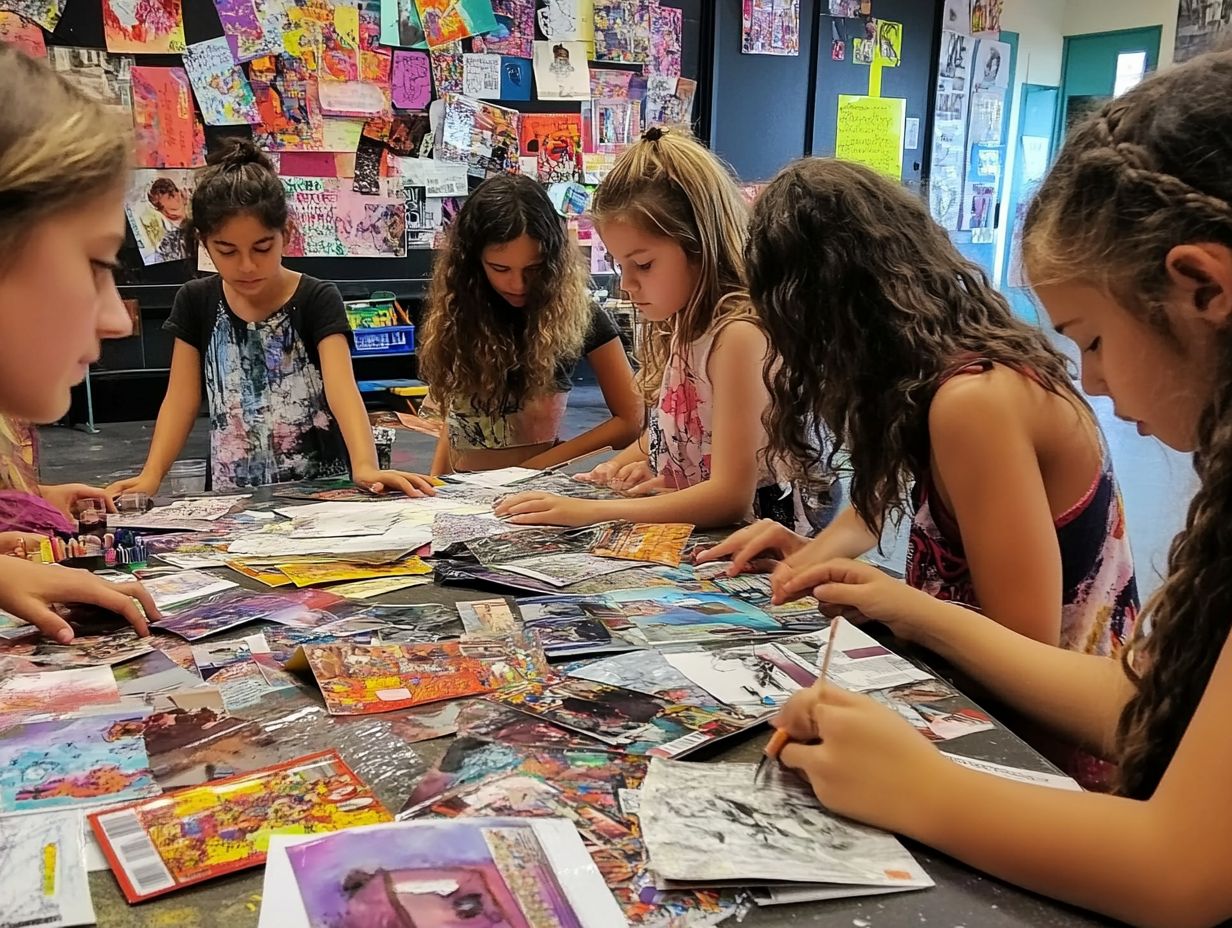
Creating a vision board can be a transformative experience. The process should include effective visualization techniques, tips for selecting motivational quotes, and guidance on how to display your board in a way that continually inspires you.
To start, think creatively about your goals and dreams. These can range from achieving academic excellence to exploring a new hobby. Visualization techniques, such as closing your eyes and vividly imagining your aspirations, can truly help solidify these ideas in your mind.
When selecting motivational quotes, choose words that resonate with you personally. This fosters a deeper sense of ownership over your ambitions. Finally, displaying your vision board in a prominent location like your bedroom or study area will remind you of your potential and inspire you to take meaningful steps toward your objectives each day.
Fun and Creative Ideas for Vision Boarding with Kids
Engaging in fun and creative vision boarding with kids can elevate the experience into a delightful bonding activity that fosters exploration and learning through play.
By incorporating games and interactive elements, you amplify their enthusiasm and deepen their connection to the vision board process. This makes it a truly enriching experience for everyone involved.
Incorporating Games and Activities
Incorporating games and activities into vision boarding can truly elevate creativity while creating a meaningful bonding experience for your family.
These interactive elements transform the process into an enjoyable event, allowing everyone to connect on a deeper level. For instance, collaborative storytelling games invite sharing dreams and aspirations, fostering a creative atmosphere. Scavenger hunts for materials or inspiration ignite new ideas and promote teamwork. Art-based activities, like painting or crafting, further enhance emotional engagement by helping visualize goals more vividly.
These dynamic experiences enrich the vision boarding process and cultivate a sense of unity and shared purpose among family members.
Encouraging Children to Use Their Imagination and Goals
Let s inspire children to harness their imagination and clearly articulate their goals! This development can be profoundly enhanced through effective visualization techniques.
How to Foster Creativity and Self-Expression
Fostering creativity and self-expression in children through vision boarding involves encouraging them to explore their unique aspirations while providing a supportive atmosphere.
This method allows young minds to visualize their dreams, transforming thoughts and feelings into tangible representations.
By introducing activities such as brainstorming sessions conversations where you help them think through their ideas and guided discussions, you can help children articulate their ambitions and interests with greater clarity.
Incorporating various mediums be it drawings, cut-outs, or even digital platforms enriches their creative outlets. Encouraging them to regularly revisit and update their vision boards sustains enthusiasm and promotes self-reflection, enabling them to adapt their aspirations as they grow.
Frequently Asked Questions
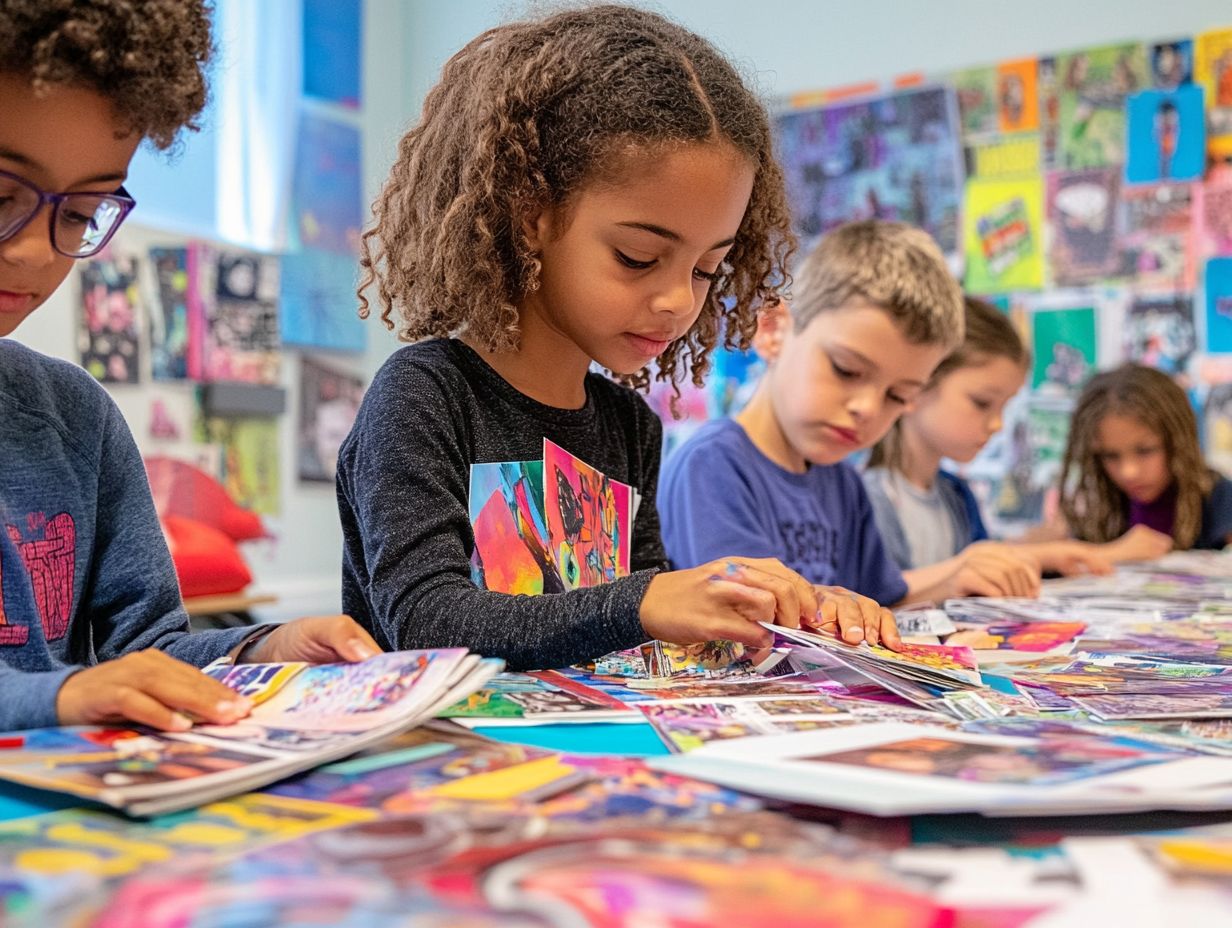
-
What is vision boarding and why is it important to teach kids?
Vision boarding is a creative process that involves visualizing and manifesting one’s goals and dreams. Teaching this to kids helps them set and achieve goals, boosts their self-confidence, and develops a positive mindset.
-
Wondering how to introduce vision boarding to kids?
You can start by explaining the concept of vision boarding and its benefits in age-appropriate language. Additionally, share engaging ideas for vision boards for children by showing them some completed vision boards for inspiration.
-
What materials should I gather for vision boarding with kids?
To teach vision boarding, you will need poster boards, magazines, scissors, glue sticks, markers, and other art supplies. You can also use online tools like Canva or Pinterest for virtual vision boards.
-
How can I make vision boarding fun for kids?
You can make vision boarding fun by involving kids in the entire process. Let them choose their materials, encourage creativity, and allow self-expression. Play some uplifting music or have a vision board party with their friends!
-
How can I guide kids in choosing their goals for their vision boards?
It’s important to guide kids in choosing their goals. Encourage them to think about their interests, passions, and dreams. Ask questions to help them brainstorm and develop meaningful, motivating goals.
Ready to start your vision board journey? Inspire your family and share your experiences!
How often should kids update their vision boards?
Kids’ interests and goals change as they grow. It’s best to update vision boards at least once a year.
This practice helps kids reflect on their progress. Encourage them to add new goals or achievements whenever they arise!

